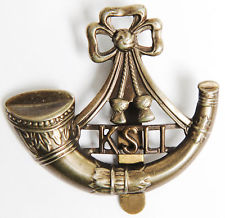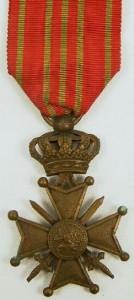Personal Details
Born: Born 1883 in Liverpool
Family: Fourth child of eight born to Thomas and Mary Caloe. He married Edith Wilkinson in 1915 at Whitchurch, Shropshire. They had two children May E and Samuel P.
Residence: In 1891 and 1901 the census lists the family as living in Farnworth, Lancashire. In 1911 Samuel was in India serving in the King’s Shropshire Light Infantry. At the end of WW1 his address was 5 Talbot Street, Whitchurch, Shropshire. By 1939 he was no longer in the army and was living in Shrewsbury with his wife and daughter in Copthorne Drive.
Employment: At age 18 he was working as a wagonner at a coal mine. Ten years later he was a sergeant in the army. At the end of WW1 he had attained the rank of Company Sergeant Major and by 1932 he was Captain, the rank he retired with prior to 1938. His civilian job in 1939 was as a storekeeper at the ARP (air raid precaution) department
Died: 1956 in Shrewsbury, Shropshire.
Military Details
Regiment: King’s Shropshire Light Infantry, 4th Battalion
Rank: Company Sergeant Major
Service Number: 6937
Date of Enlistment:
Date of Discharge:
Reason for Discharge: Continued in Army
Other Information: He would appear to have been the Drill Instructor at Whitchurch Drill Hall in August 1914.
Eligible for a wound stripe as a result of a gunshot wound to his left hand in December 1917.
Received the MBE in 1938 King’s Birthday honours.
Samuel was awarded the Campaign Medals (1914/15 Star, British War Medal, and Victory Medal) and the Belgium Croix De Guerre.

The 1914 Star (also known as 'Pip') was authorised under Special Army Order no. 350 in November 1917 and by an Admiralty Fleet Order in 1918, for award to officers and men of the British and Indian Expeditionary Forces who served in France or Belgium between 5 August and midnight of 22–23 November 1914. The former date is the day after Britain's declaration of war against the Central Powers, and the closing date marks the end of the First Battle of Ypres.
The 1914–15 Star (also known as 'Pip') was instituted in December 1918 and was awarded to officers and men of British and Imperial forces who served against the Central European Powers in any theatre of the Great War between 5 August 1914 and 31 December 1915. The period of eligibility was prior to the introduction of the Military Service Act 1916, which instituted conscription in Britain.
The British War Medal (also known as 'Squeak') was a silver or bronze medal awarded to officers and men of the British and Imperial Forces who either entered a theatre of war or entered service overseas between 5th August 1914 and 11th November 1918 inclusive. This was later extended to services in Russia, Siberia and some other areas in 1919 and 1920. Approximately 6.5 million British War Medals were issued. Approximately 6.4 million of these were the silver versions of this medal. Around 110,000 of a bronze version were issued mainly to Chinese, Maltese and Indian Labour Corps. The front (obv or obverse) of the medal depicts the head of George V. The recipient's service number, rank, name and unit was impressed on the rim.
The Allied Victory Medal (also known as 'Wilfred') was issued by each of the allies. It was decided that each of the allies should each issue their own bronze victory medal with a similar design, similar equivalent wording and identical ribbon. The British medal was designed by W. McMillan. The front depicts a winged classical figure representing victory. Approximately 5.7 million victory medals were issued. Interestingly, eligibility for this medal was more restrictive and not everyone who received the British War Medal ('Squeak') also received the Victory Medal ('Wilfred'). However, in general, all recipients of 'Wilfred' also received 'Squeak' and all recipients of The 1914 Star or The 1914/1915 Star (also known as 'Pip') also received both 'Squeak' and 'Wilfred'. The recipient's service number, rank, name and unit was impressed on the rim.
The World War I Croix de guerre was established by royal decree on 25 October 1915 as an award for bravery or other military virtue on the battlefield. It was only awarded to individuals. The Croix de guerre was not only awarded for bravery but also for three years or more of service on the front line, or for good conduct on the battlefield. It was also awarded to volunteers older than 40 or younger than 16 after a minimum of 18 months of service, to escaped prisoners of war rejoining the armed forces, and to military personnel who were placed on inactive duty because of injury.
Click on the tag below to see details of each recipient.


